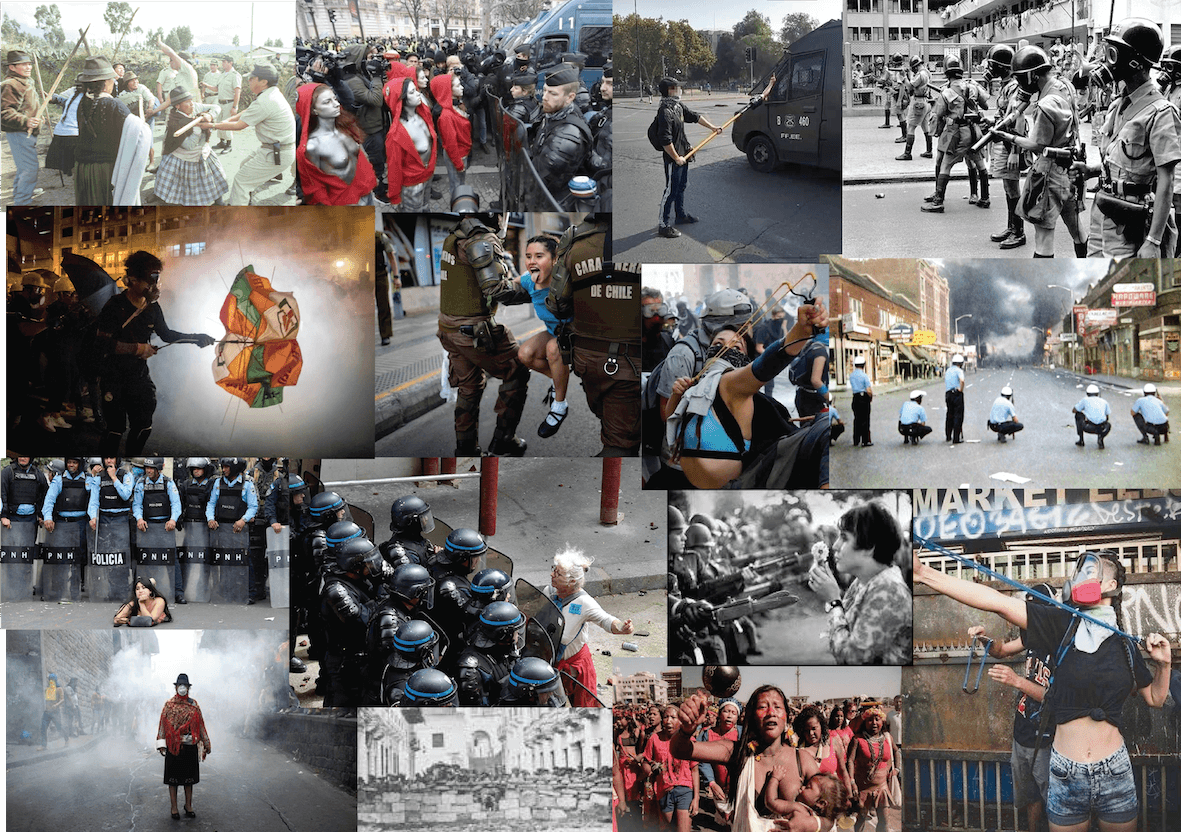Robocops, flowers and stones: technologies and arts of repression, resistance and protest
Henry Chavez, Pontificia Universidad Católica del Ecuador; Denis Ismael Chavez Ordoñez, PUCE; José Egas, EHESS
Posted: August 5, 2020
After half a century of the Prague Spring and May 68 in France, last year saw the emergence of a new wave of global protest against the establishment. Gilets Jaunes in France, young pro-democrats in Hong Kong, indigenous people in Ecuador, the urban poor in Chile and many other social movements around the world triggered a global political upheaval whose consequences are still unknown. The COVID-19 pandemic slowed this movement, but police abuses and crimes in the United States that followed protests within the Black Lives Matter movement and other related events in France and elsewhere in the world, as well as the acute, unprecedented economic crisis resulting from the global blockade, have rekindled the wave of violence and protest. Although their context, causes and objectives may differ from one movement to another, one factor common to all of them was the brutal and disproportionate repression applied by the police or other armed forces against civilians. This repression, made possible by an increasingly sophisticated infrastructure and technology of repression, contrasts with the effectivity and simplicity of a throwed stone, the beauty of flower in the barrel of a gun or the power of two threatening naked breasts fighting the patriarchal system we live in. Although innovation and creativity is always at hand in the lines of the demonstrators, their tools, instruments, strategies and weapons remain more or less the same (how many times have the stones in our streets been removed to be thrown to the public forces and replaced by them in the same street? ). Conversely, police and state coercive forces are always acquiring new equipment, weaponry and technological devices to better contain citizen protests. The latest global protest showed a plethora of new technologies deployed to repress, hurt and frighten as many citizens as possible. This project was originally conceived as a real world exhibition made of images, artifacts and other objects that would show the evolution of both: the technologies of repression and the arts of protest and resistance in different times and parts of the world. Given the current context, we present here only the first step of the research process behind the original exhibition project that resulted in a website containing a database of descriptions and images of the entire history of demonstrations, protests and strikes around the world recorded on Wikipedia. The website allows one to navigate in time and space to find information and images about each of these events and can be used for further exploration and research. The main idea is that this online device allows an approach to the globality of these events. The next steps of this project include the development of an image recognition tool to identify repression and protest technologies within image databases and build a real world exhibition with the objects and artifacts identified through this process.

